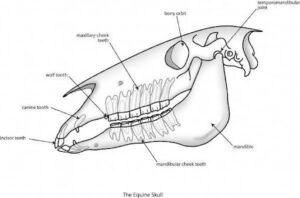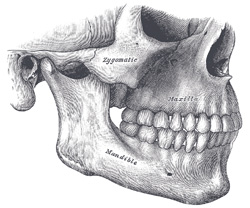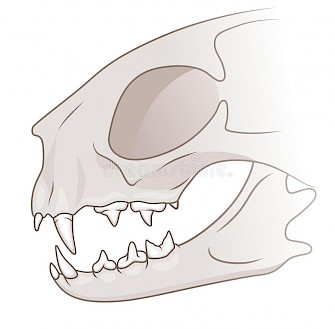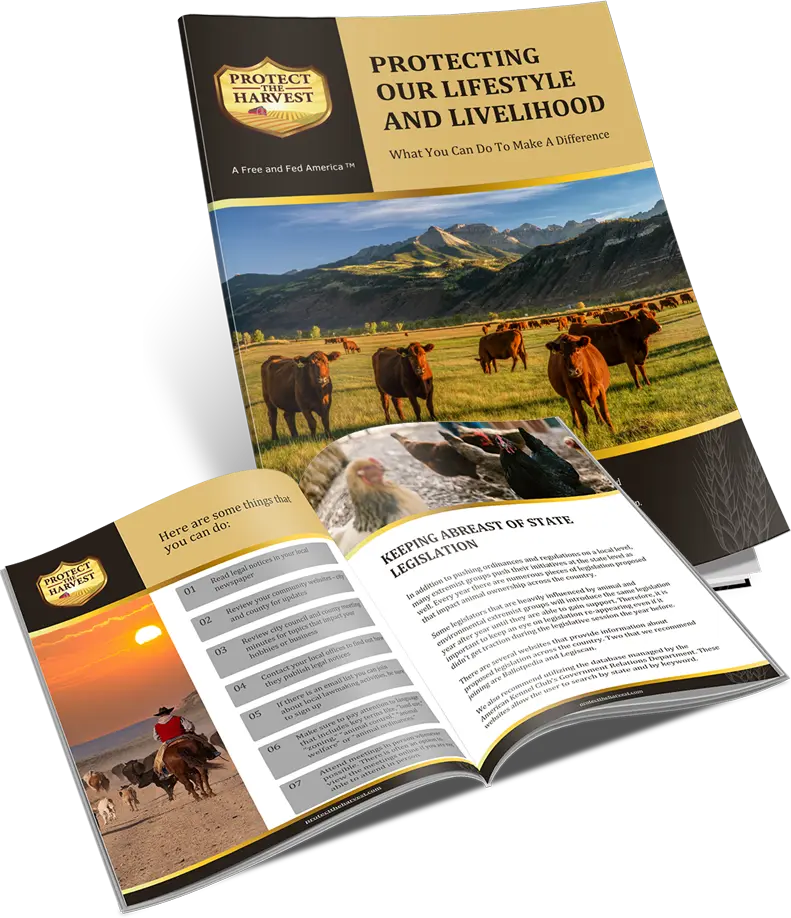As we have written in our other articles on this topic, vegans are doing their best to push their dietary choices on the public, whether the public agrees or not. We brought to light how this push includes children, but what about their pets? Veganism has left no stone unturned and they are now going after family pets. Pets that are naturally vegetarians, such as hamsters and rabbits, seem to be of no issue, but others that are carnivores and omnivores present a problem to the extremists. When it comes to our dogs and cats, pushing a vegan diet on them is unconscionable. Furthermore, it is even considered animal cruelty in the United Kingdom.
Veganism is based on anthropomorphism, which is the practice of applying human traits and behaviors on animals. When animals are anthropomorphized, their basic physiology and behaviors are not recognized or honored. This practice puts animals at risk and threatens their health and welfare.
Before discussing the notion of whether a vegan diet is appropriate for a dog or cat, one must understand the physiological and anatomical differences between species and how they have evolved to eat the diets they do.
Evolution, Anatomy, and Diet
Vegans like to assume, as well as persuade meat eaters, that humans evolved to eat only plants. This is not the case and our dentition as well as our gastrointestinal tract are proof. Herbivores, those animals that only eat vegetation, have flat, wide molars, with strong side to side movement of the jaw in order to grind up plant material, or in the case of ruminants, a set of lower jaw incisors and a hard “dental pad” where the upper incisors would be.

They also have a very long intestinal tract, an enlarged cecum in hind-gut fermenters (like horses) to aid in fermentation of plant material, or a multi-compartmented stomach as in the case of ruminants.
Humans, like other omnivores, have chisel shaped incisors and sharp pointed canine teeth, although ours aren’t as pointed as other omnivores. Humans also have a wide, somewhat flat molar for grinding. It is obvious that the molars are not completely flat, but have ridges to aid in grinding and masticating different types of food.

The human intestinal tract is different than other species. It’s much shorter than an herbivore, and the cecum attaches to the ascending colon of the large intestine. Its function is to absorb salts and electrolytes and lubricate the solid waste that passes into the large intestine.
Dogs are Omnivores
Even though they are from the order of Carnivora, dogs are omnivores or “facultative carnivores.” In theory, dogs can survive on a vegetarian diet. This adaptation is most likely due to the ebb and flow of finding prey animals. In the wild, even wolves will live for a short time as vegetarian, but as soon as prey fills an area, they will go back to eating meat. However, just because they “can” survive on a vegetarian diet, doesn’t mean it’s what is best for their long-term health and well-being.

While the canine teeth of dogs are much more pronounced than those of a human, and the carnassial (pre-molar) and molars are more pointed, when compared with the dentition of an obligate carnivore, like cats, there are significant differences. Dogs have more teeth than cats. Their canines are blunter and the incisors aren’t as pointed. The molars of a dog are wider than cats, but they are still pointed which allows for some grinding motion and the jaw itself can move in a side-to-side motion.
In dogs, digestion starts with chewing, however, like the cat, their saliva doesn’t produce amylase which breaks down starches. This also differs from the human digestive system which does produce salivary amylase. Dogs produce three core digestive enzymes in their stomachs:
● Pepsinogen
● Trypsin
● Chymotripsin
They also produce up to 100 times the amount of acid in their stomachs as humans. This means they rapidly break down proteins and have little hindrance at softening bone matter that would be impossible for humans to digest. The canine digestive tract takes the shortest amount of time than any other living mammal, just eight hours in total. The short digestive time also means that they are unlikely to be affected by some of the pathogens that humans are unable to stomach.
Without the ability to produce salivary amylase, and with the high level of stomach acids, this is indicative of a diet that needs higher levels of animal protein than other omnivores.
The canine digestive system shares many other similarities with humans including the intestinal length ratio. In dogs, the length of the intestine is about 6 times longer than its body length, snout to anus. And in humans, the length ration is about 5:1. Dogs and humans both are susceptible to heartburn as well.
Humans and dogs aren’t the only omnivores. Other omnivores include bears, pigs, hedgehogs, opossum, chimpanzees, chickens, and squirrels.
Cats are True Carnivores
The definition of a true or “obligate carnivore” means that their nutritional needs are met by eating a diet that consists of animal-based proteins. All felids, from the smallest kitten to the largest tiger, are obligate carnivores. Their dentition is different from a dog. Felids have fewer teeth than dogs. Their canines, incisors, carnassials, and molars are all sharp and pointed and designed to shear meat from bones as well as to aid in killing prey.

The intestinal length in cats is significantly shorter due to the easier digestibility of protein as compared to carbohydrates. The cat’s ratio of intestine to body length is 4:1, meaning the intestine is four times longer than the length of the cat. In comparison, the ratio for dogs is 6:1 and for pigs is 14:1.
In addition to these differences, cats are unable to adapt to varying levels of carbohydrates in their diets due to various changes in the digestive and absorptive functions of the intestine. Salivary amylase, the enzyme that initiates digestion of dietary starches in humans, is completely absent in cats. The intestinal amylase appears to be exclusively derived from the pancreas. The level of pancreatic amylase is only 5% that of dogs. Other differences in cats are that they have a vestigial cecum (no longer functioning) and short colon, which limits their ability to use poorly digestible starches and fiber for energy through bacterial fermentation in the large bowel.
Cats are unable to synthesize several essential amino acids including taurine which is found in highest concentrations in animal protein, and especially organ meats. Methionine and Cysteine are both essential amino acids and are required in higher amounts in cats than dogs need.
The cat is also unable to convert beta-carotene into retinol (Vitamin A), which is necessary for maintenance of vision, bone and muscle growth and reproduction. They are unable to convert sufficient amounts of the fatty acid linoleic acid to meet their requirement for arachidonic acid. Cats also lack sufficient enzymes to meet the metabolic requirements for vitamin D photosynthesis in the skin, so they require a dietary source of vitamin D. The primary function of vitamin D is to balance the calcium and phosphorus levels in the body. While this seems like a lot of needs, all of these requirements can be met with ONE ingredient: animal protein.
Vegetarian Diets in Dogs
While a dog can survive on a vegetarian diet, the diet should be a veterinary prescription diet or one that has been formulated by a veterinary nutritionist. When animal protein is removed from the diet, the dog then loses out on important essential amino acids and essential fatty acids. Therefore, these essential nutrients must be supplemented in an unnatural state. While supplementation can work, the supplemented nutrient is not as bioavailable to the dog, meaning that it may be a case of too much, or too little of the missing ingredient. By making the diet vegetarian, some of the animal proteins can be replaced using eggs, cheese, milk, whey, but again, these do not have all of the essential amino acids found in muscle meat.
The argument that wolves do survive without meat doesn’t hold water, as that happens only when there is no prey for them to consume. The minute the prey returns, wolves don’t sit and wait for the berries to ripen, or corn to be harvested, they go out and attack their prey and consume it. Meat is an essential ingredient for both wolves and dogs, but they have adapted to survive on a diet without meat, for limited periods of time.
Cats and Vegetarian Diets
As obligate carnivores, cats evolved as hunters which consume prey that contains about 50-55% animal protein, moderate amounts of fat (about 35%), and a minimal amount of carbohydrates (less than 10% is ideal). Their diet still requires these general proportions today. Cats also require more than a dozen other nutrients, including vitamins, minerals, fatty acids, and amino acids. Unlike dogs, cats do not do well on a vegetarian or vegan diet, even when formulated by a veterinary nutritionist.
As with dogs, they do not produce salivary amylase to break down the starches in carbohydrates, and their digestive system creates acids and enzymes appropriate for the breakdown of meat protein and destruction of bacteria. Cats also have dietary requirements that are different from dogs, and can develop nutritional deficiencies when fed a diet formulated for dogs. Cats require dietary sources of vitamin A, arachidonic acid and taurine, higher quantities of fat and protein than dogs, as well as the amino acid arginine and vitamins niacin and pyridoxine (vitamin B6).
Cats fed a grain or vegetable diet can also run low on other essential amino acids, like methionine and cysteine. Vitamin deficiencies can also lead to liver failure and stomach issues. In addition, if the level of carbohydrates in a cat’s diet gets too high, their ability to digest protein also decreases. True carnivores lack the metabolism required for the proper digestion of vegetable matter. Some carnivorous mammals eat vegetation specifically as an emetic (a substance that causes vomiting). While some cat owners may find the fact that the domestic cat is an obligate carnivore disturbing or objectionable, it is important to bear in mind the practical consequences – cats cannot be vegetarians!
Cats and Water
Cats are evolved from desert dwellers, and as such, have developed a decreased thirst drive. They derive most of their water from their prey and tend to run at a 4% dehydration deficit. Ideally, cats should have a diet that replicates eating prey, and the best way to feed them is with a canned diet as it contains about 75% water. Cats may appear to not drink much water, but if they are eating a canned food diet, it is sufficient for their needs, however fresh water should always be available. Many cat owners believe that their cats drink more water when fed a dry diet, however, with their decreased thirst drive, automatic 4% dehydration level, there is no way for them to drink enough water to hydrate themselves properly.
The Science Proves Restricting Dogs and Cats to Vegan Diets Goes Against the Basic Tenets of Animal Welfare
The science proves that forcing a dog or cat to consume a vegan diet is detrimental to their health. When dogs and cats are provided a vegan diet, they are being deliberately denied the essential nutritional ingredients which are readily bioavailable to them in an appropriate diet designed for their unique needs. It is true that at first dogs or cats may seem to “do well” on vegan diets. However, the long-term impact shows a different result. The lack of those essential fatty and amino acids wreak havoc on their body systems, because of this, people who are opposed to feeding pets animal proteins should not own a dog or cat.
When vegan animal extremists anthropomorphize animals and refuse to feed them a diet specific to their physiological needs, they put the health and welfare of those animals at great risk. If they insist on doing so, they are placing their ideological beliefs over true animal welfare.



